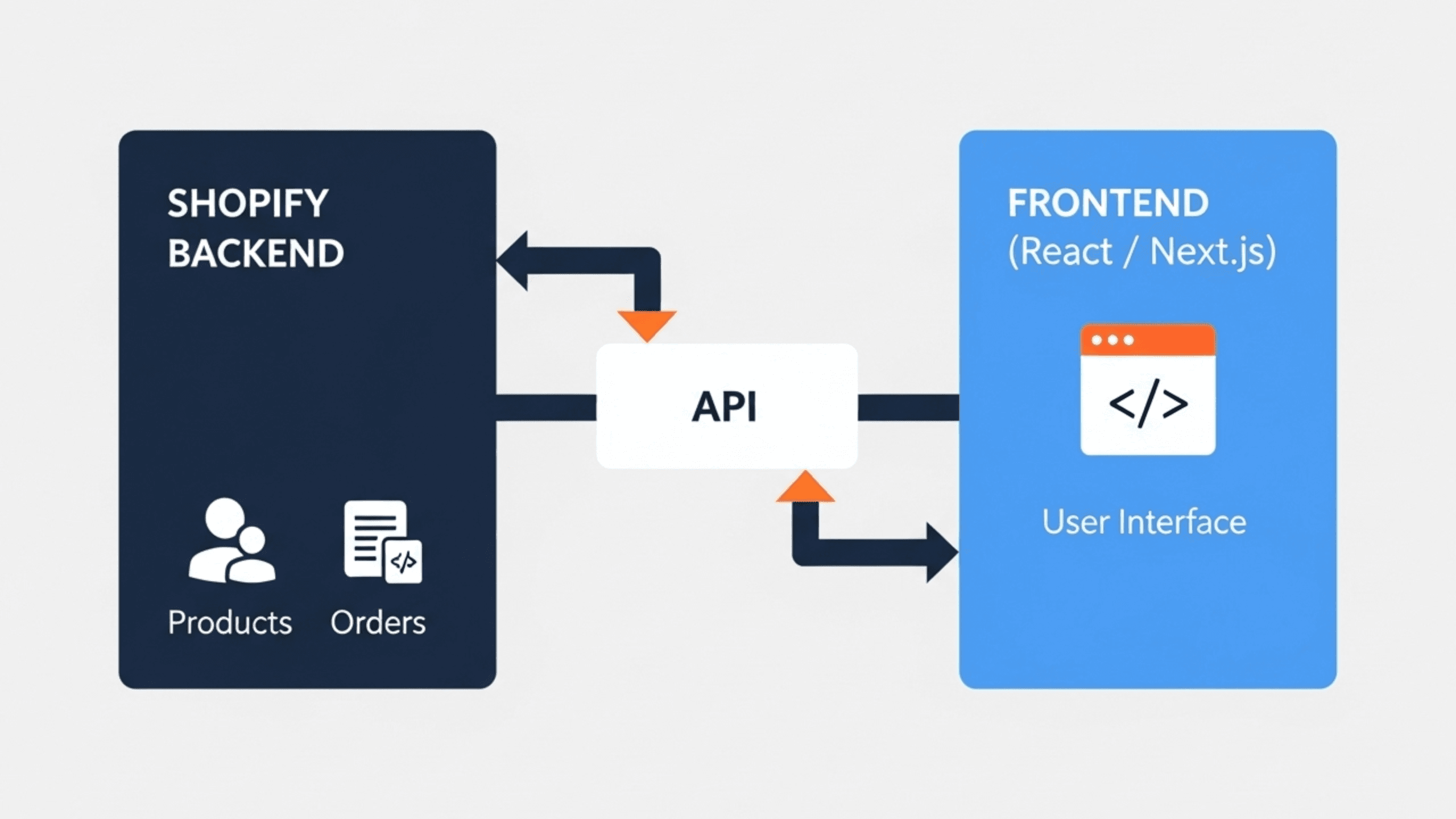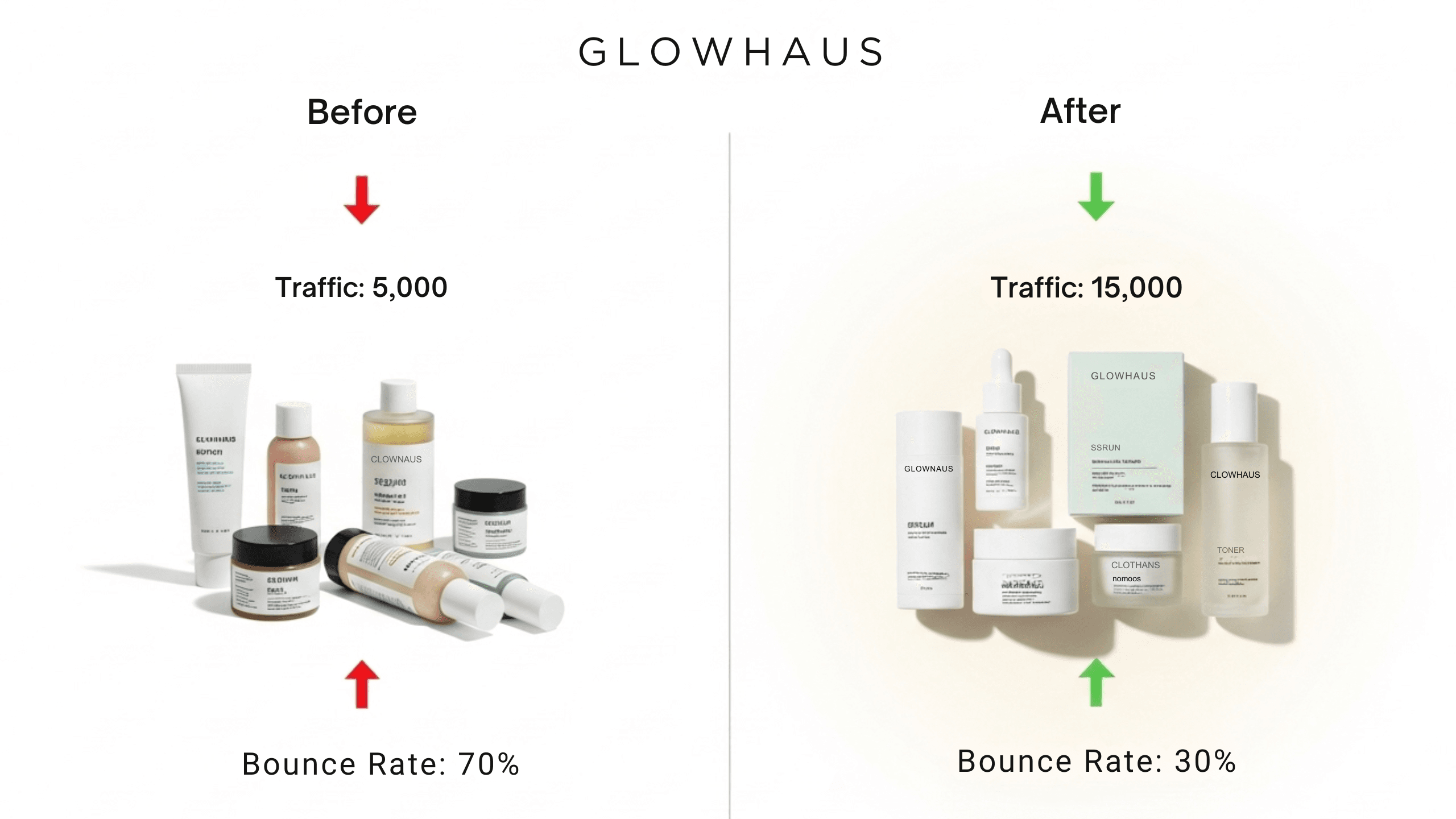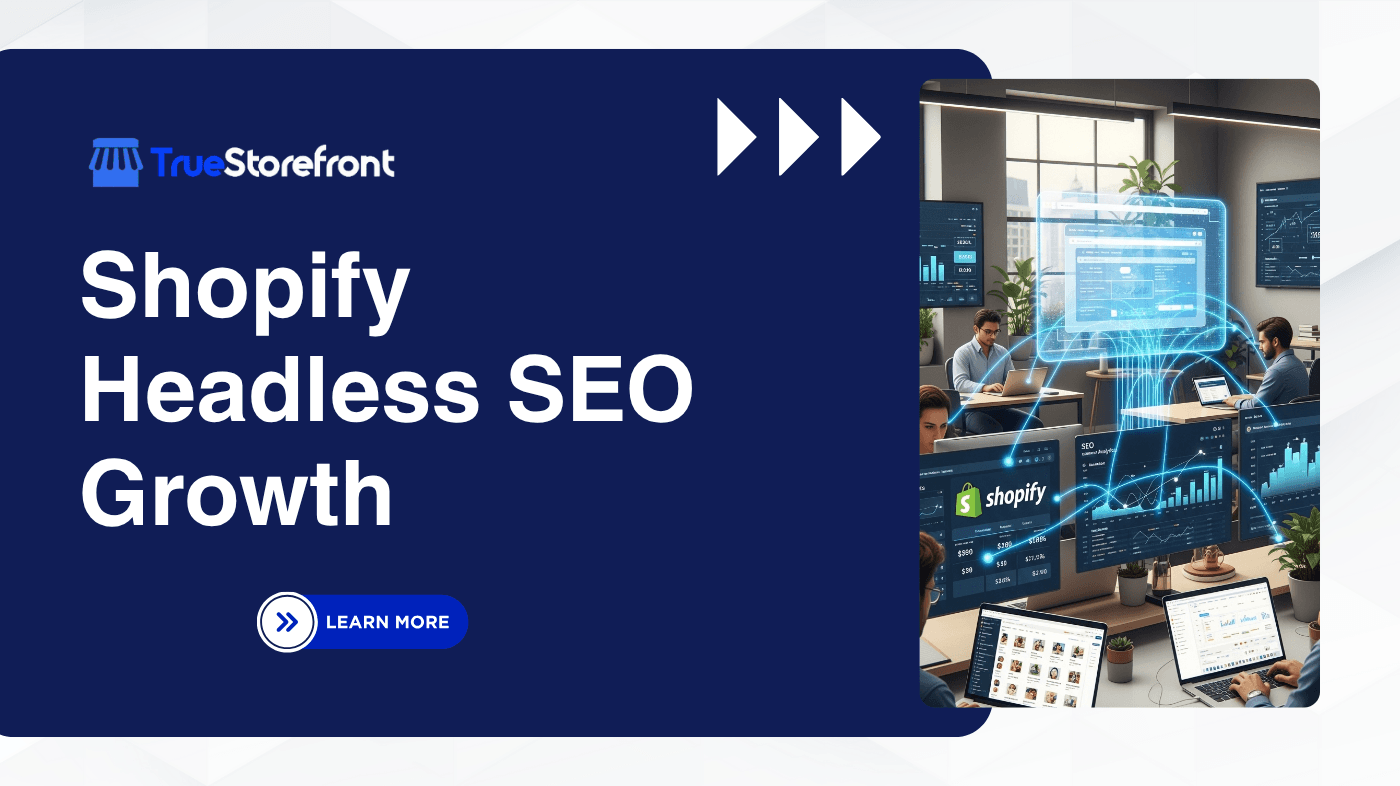In today’s hyper-competitive eCommerce landscape, startups face an uphill battle with limited budgets, rising ad costs, and the urgent need to grow organic traffic fast. For those using Shopify, the shift toward headless architecture has become a game-changer. With Shopify Headless SEO growth, startups can achieve superior speed, flexibility, and visibility that traditional setups simply can’t match.
This guide explores how Headless Shopify empowers startups to accelerate their SEO and organic growth, covering its key advantages, technical SEO impact, and practical strategies to get started.
I. Understanding Headless Shopify for Startups

Headless Shopify refers to decoupling Shopify’s backend (where you manage products, orders, and customers) from its frontend (the storefront users interact with). Instead of being tied to Shopify’s built-in Liquid theme, startups can build custom frontends using modern frameworks like Next.js, Nuxt.js, or React.
Why This Matters for Startups
Traditional Shopify stores often face SEO and performance limitations due to their monolithic structure. A headless setup removes these constraints, allowing startups to:
- Create faster, SEO-optimized sites
- Deliver personalized user experiences
- Seamlessly integrate with marketing tools and APIs
- Maintain flexibility for scaling
For growth-oriented startups, this structure offers the perfect balance between speed, scalability, and innovation.
II. How Headless Shopify Boosts SEO Growth
2.1 Lightning-Fast Page Speed
Google’s ranking algorithm heavily favors fast-loading websites. With a headless architecture, static site generation (SSG) and server-side rendering (SSR) allow pages to load in milliseconds. As a result:
- Lower bounce rates
- Improved Core Web Vitals
- Higher search engine rankings
Example: A startup shifting from traditional Shopify to a headless setup with Next.js can see up to 40–60% faster page load times, directly improving their organic CTR and rankings.
2.2 Optimized Crawlability and Indexing
Shopify’s traditional setup can limit how bots crawl dynamic pages. Headless architecture gives you complete control over meta tags, canonical URLs, and structured data, ensuring:
- Search engines crawl your pages efficiently
- Duplicate content issues are minimized
- Rich snippets appear correctly
This means startups can maximize every bit of organic visibility with clean, SEO-friendly code.
2.3 Enhanced Content Strategy
For SEO success, consistent content publishing is key. Headless setups often integrate with CMS platforms like Strapi, Contentful, or Sanity, allowing marketing teams to:
- Manage blogs, landing pages, and product content separately
- Publish quickly without developer intervention
- Optimize metadata and internal linking efficiently
This agility lets startups push content faster, helping them scale organic SEO traffic without being slowed down by development bottlenecks.
2.4 Mobile-First SEO Advantage
Most startup customers browse and shop on mobile devices. With Headless Shopify, developers can create mobile-optimized Progressive Web Apps (PWAs) that:
- Load instantly on any device
- Work offline
- Offer app-like experiences
These benefits translate into longer session durations, higher conversions, and stronger mobile SEO rankings.
2.5 Better User Experience (UX) = Better SEO
SEO isn’t just about keywords anymore, it’s about experience. Google’s Page Experience update ranks websites with smooth, interactive UX higher. Headless technology enables:
- Instant transitions between pages
- Personalized recommendations
- Reduced cart abandonment
For startups, that means not only higher SEO rankings but also higher retention and lifetime customer value.
III. Real-World Example: Headless Shopify in Action
Let’s take an example:
Startup “GlowHaus,” a sustainable skincare brand, migrated from a traditional Shopify theme to a headless setup using Next.js and Contentful.
Results after 3 months:
- +70% improvement in organic traffic
- +40% faster page load time
- 35% reduction in bounce rate
- 20% increase in conversion rate

GlowHaus leveraged Headless Shopify to optimize its SEO strategy, build authority through content, and enhance its digital experience without relying solely on paid ads.
IV. How to Implement Headless Shopify for SEO Growth
Step 1: Choose a Modern Frontend Framework
Startups should select a frontend framework that balances performance and flexibility. Top options include:
- Next.js – Great for SEO due to its SSR support
- Nuxt.js – Ideal for Vue-based developers
- Gatsby – Optimized for static site generation
Step 2: Connect to Shopify via API
Use Shopify’s Storefront API or GraphQL to fetch products, collections, and checkout data. This ensures smooth data flow between your backend and frontend.
Step 3: Integrate a Headless CMS
Choose a CMS like Strapi, Sanity, or Contentful for managing blogs, landing pages, and SEO fields. These CMSs allow your marketing team to create and publish optimized content instantly.
Step 4: Implement Technical SEO
Focus on:
- Meta titles and descriptions: Customizable per page
- Structured data: For rich results on Google
- Dynamic sitemap: Auto-updated with product or page changes
- Canonical tags: Avoid duplicate content issues
Step 5: Monitor and Optimize Performance
Use tools like:
- Google Search Console: Track keyword rankings
- Lighthouse & PageSpeed Insights: Monitor Core Web Vitals
- Ahrefs / SEMrush: Analyze backlinks and content performance
Continuous optimization is essential to maintain your Shopify Headless SEO growth momentum.
V. Key Benefits of Headless Shopify for Startups
VI. Common SEO Mistakes to Avoid
Even with a powerful headless setup, startups can fall short if they overlook these key areas:
- Forgetting structured data – limits visibility on SERPs
- Neglecting internal links – weakens crawl depth
- Overusing JavaScript – can harm rendering for bots
- Skipping performance monitoring – impacts SEO over time
Addressing these ensures that the transition to headless actually boosts, not hinders, growth.
VII. When Should a Startup Go Headless?
While Headless Shopify offers many advantages, it’s ideal for startups that:
- Have growing traffic and product catalogs
- Rely heavily on SEO and organic acquisition
- Need full control over design and speed
- Plan to expand internationally or across multiple channels
For early-stage startups with limited development resources, it’s best to start small, then scale into a headless setup once your growth demands it.
VIII. Conclusion: Drive SEO Growth with Headless Shopify
As startups continue to compete for organic visibility, Headless Shopify stands out as a strategic investment. It empowers young brands to outpace larger competitors with better SEO performance, faster loading times, and modern user experiences.
If your startup is ready to scale smarter and faster, don’t let outdated architecture hold you back.
Read more:
